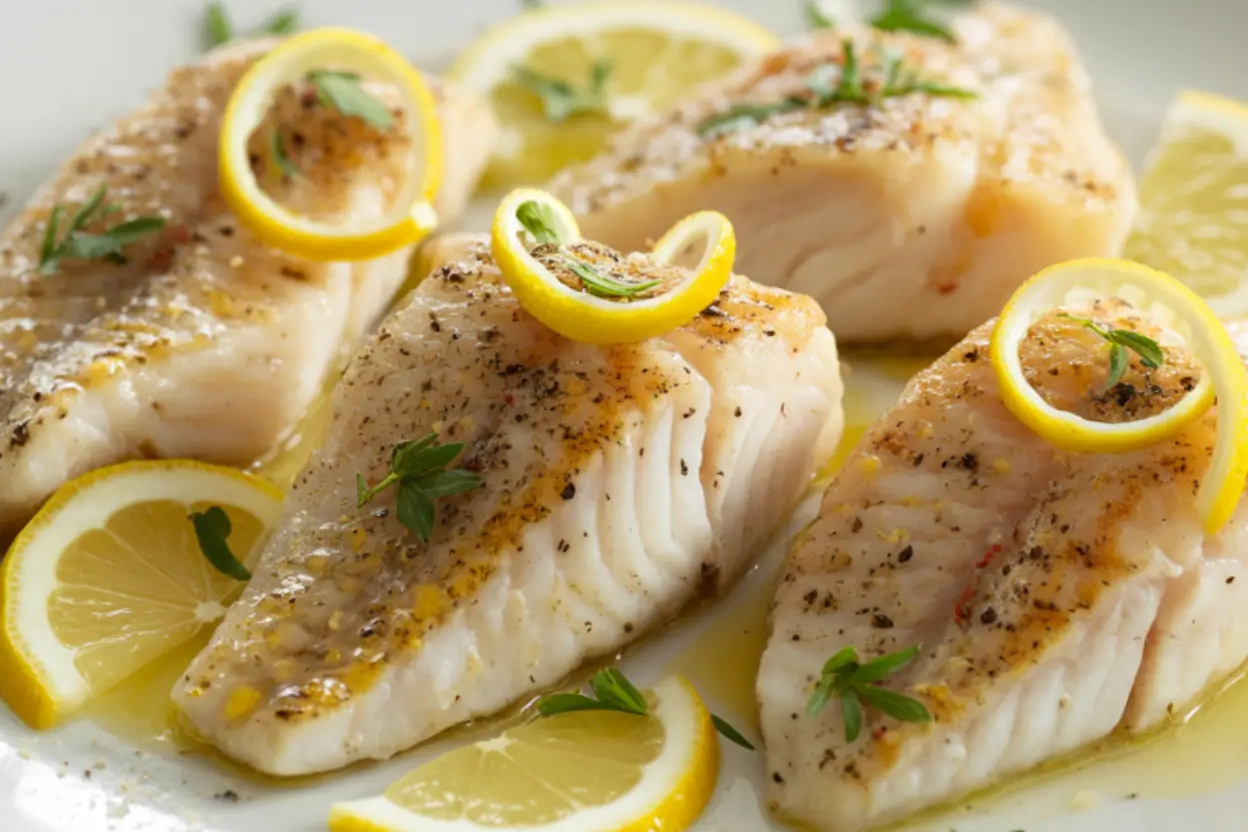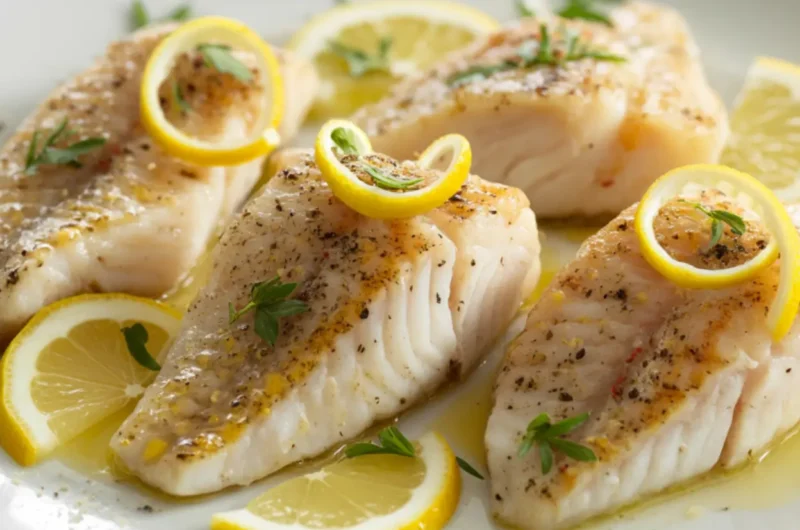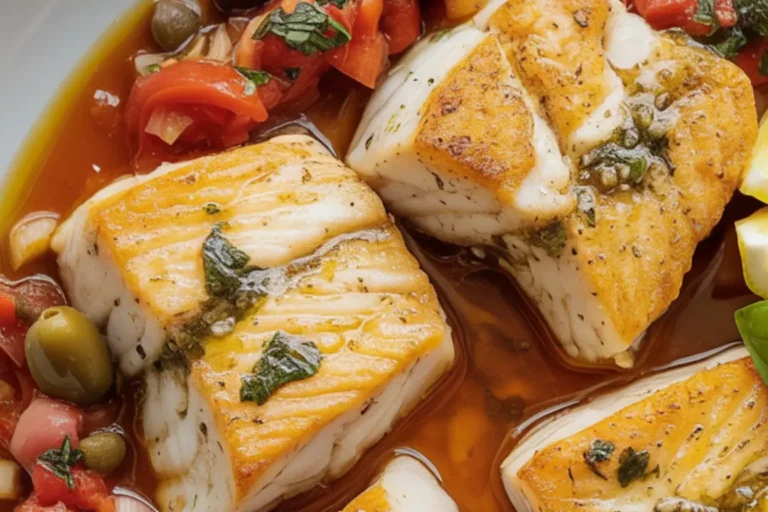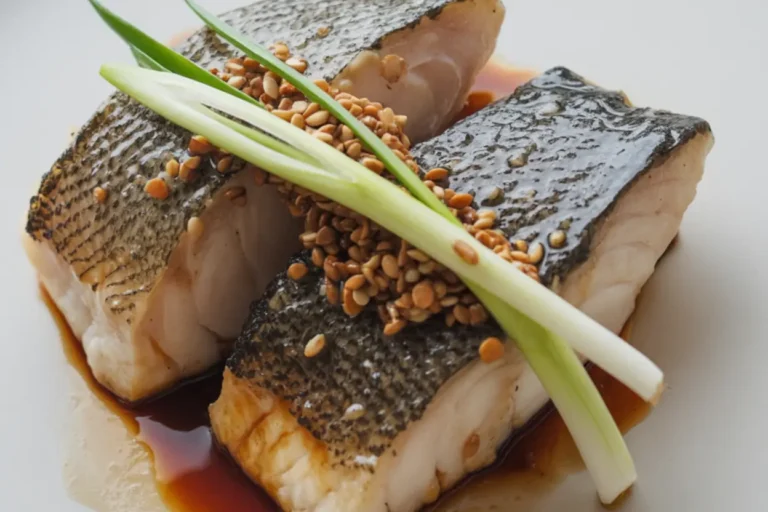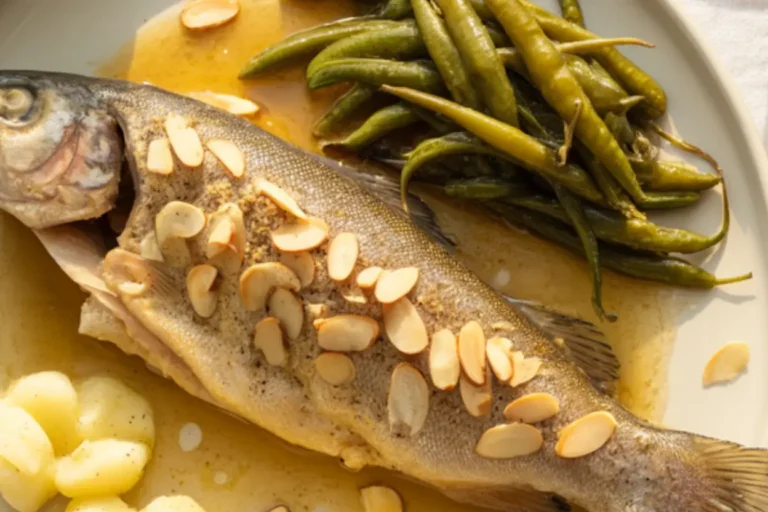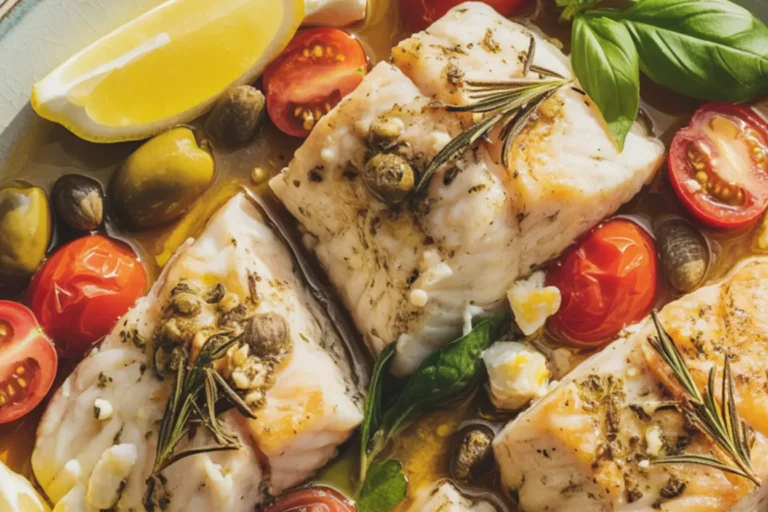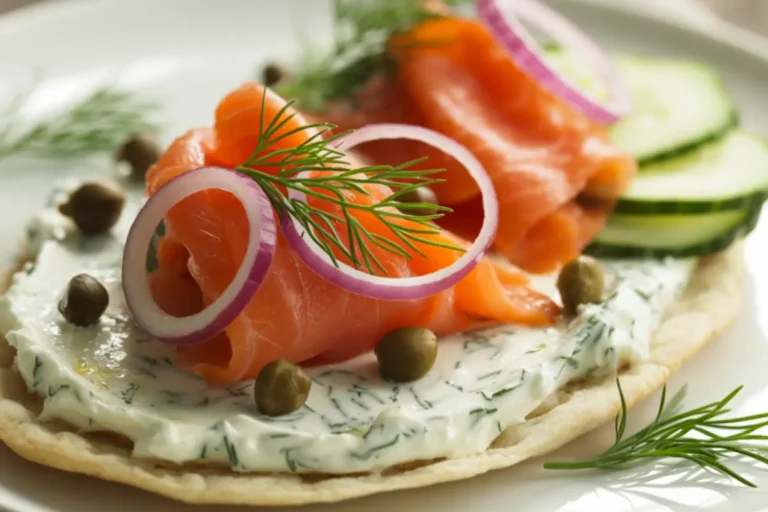Lemon Pepper Tilapia Recipe: Best Way to Keep It Juicy
Table of Contents
There’s something irresistible about the bright, zesty flavor of perfectly prepared lemon pepper tilapia. After experimenting with dozens of methods over the years, I’ve finally perfected a technique that consistently delivers fish that’s bursting with flavor while remaining remarkably tender and juicy. If you’ve ever ended up with dry, overcooked fish that leaves you disappointed, this recipe will be your new secret weapon.
Thank you for reading this post, don't forget to subscribe!What makes this lemon pepper tilapia special isn’t just the vibrant flavors – it’s the foolproof method that ensures the fish retains its moisture while developing a delicate, flavorful crust. The combination of fresh lemon, aromatic black pepper, and carefully selected herbs creates a profile that’s bright and bold without overwhelming the delicate fish. Whether you’re a seafood enthusiast looking to expand your repertoire or someone trying to incorporate more healthy proteins into your diet, this recipe delivers restaurant-quality results with surprising ease. Let me walk you through exactly how to create this weeknight-friendly dish that tastes anything but ordinary.
How to Make Lemon Pepper Tilapia
Quick Overview
This lemon pepper tilapia delivers the perfect balance of bright citrus and aromatic pepper, creating a dish that’s vibrant yet comforting. What makes this recipe special is the thoughtful approach to moisture retention – a common challenge with delicate white fish. By using a combination of proper preparation techniques and a two-phase cooking method, the tilapia remains remarkably juicy while developing a subtle exterior crust that locks in flavor. The fresh lemon infuses every bite, working harmoniously with the pepper rather than competing with it.
One of the greatest advantages of this recipe is its efficiency combined with impressive results. From start to finish, you’ll spend only about 25 minutes, with just 15 minutes of active preparation and cooking time. The process is straightforward, requiring no special equipment or advanced techniques, making it accessible even to novice cooks. Despite its simplicity, the finished dish looks and tastes sophisticated enough for company, proving that seafood doesn’t need to be complicated or time-consuming to be absolutely delicious. The result is a light yet satisfying main course that works beautifully for everything from quick weeknight dinners to casual entertaining.
The Ingredients I Use to Bring My Lemon Pepper Tilapia to Life
For the fish:
- 4 tilapia fillets (about 6 ounces each), patted dry
- 2 tablespoons olive oil, divided
- 1 tablespoon unsalted butter
- ½ teaspoon kosher salt
For the lemon pepper seasoning:
- 2 tablespoons fresh lemon zest (from about 2 large lemons)
- 2 teaspoons freshly ground black pepper
- 1 teaspoon garlic powder
- ½ teaspoon onion powder
- ½ teaspoon dried thyme
- ¼ teaspoon dried oregano
- ¼ teaspoon paprika
For the finishing touches:
- 3 tablespoons fresh lemon juice (from the same lemons used for zest)
- 2 tablespoons fresh parsley, finely chopped
- Lemon slices for garnish
- An additional 1 tablespoon butter (optional, for extra richness)
Step-by-Step Instructions
Step 1: Prepare the Lemon Pepper Seasoning
- In a small bowl, mix together the fresh lemon zest, black pepper, garlic powder, onion powder, dried thyme, dried oregano, and paprika. Gently massage the lemon zest into the spices with your fingers to release the oils and blend the ingredients into a smooth mixture.
- The key to superior flavor is using freshly zested lemon rather than dried lemon peel. Use a microplane grater for the finest zest that will distribute evenly throughout the seasoning mix.
- Set this seasoning mixture aside while you prepare the fish. This brief resting time allows the flavors to meld together and the dried herbs to infuse the lemon oils.
Step 2: Prepare the Tilapia Fillets
- Remove the tilapia fillets from the refrigerator about 15 minutes before cooking to take the chill off. Cold fish placed in a hot pan tends to seize up and cook unevenly.
- Using paper towels, thoroughly pat the tilapia fillets dry on both sides. This step is crucial for achieving a nice sear and preventing the fish from steaming in its own moisture.
- Once dry, season both sides of each fillet with kosher salt, distributing it evenly with your fingertips. The salt not only adds flavor but also helps the fish retain moisture during cooking.
- Sprinkle the lemon pepper seasoning mixture evenly over both sides of each fillet, gently pressing it onto the surface to adhere. Reserve about 1 teaspoon of the mixture for finishing the dish later.
- Let the seasoned fillets rest for 5 minutes to allow the flavors to penetrate the surface of the fish before cooking.
Step 3: Cooking the First Side
- Select a large non-stick skillet or well-seasoned cast iron pan large enough to accommodate the fillets without crowding. If necessary, cook in batches rather than overcrowding the pan.
- Heat 1 tablespoon of olive oil in the skillet over medium heat until it shimmers but doesn’t smoke. The proper pan temperature is crucial – too hot and the seasonings may burn, too cool and the fish won’t develop a proper crust.
- Add 1 tablespoon of butter to the hot oil and swirl to combine as it melts. This combination gives you the flavor of butter with the higher smoke point of olive oil.
- Carefully lay the seasoned tilapia fillets in the pan, presentation side down (usually the side that was the skin side). Arrange them so they’re not touching each other.
- Let the fillets cook undisturbed for 3-4 minutes. Avoid moving them or checking underneath too often, as this can prevent the crust from forming correctly.
- It’s time to flip when the edges of the fillets start to turn opaque and the bottom has a light golden color. If you encounter resistance while flipping, give them another 30 seconds to cook – they will release naturally once properly seared.
Step 4: Cooking the Second Side and Finishing
- Using a thin, flexible spatula, carefully flip each fillet. Add the remaining tablespoon of olive oil around the edges of the pan if the surface appears dry.
- Cook the second side for 2-3 minutes, or until the fish is just cooked through. The most reliable way to check for doneness is by using the tip of a knife to gently test the center of the thickest part. It should be opaque, flake easily, and still look moist.
- Reduce the heat to low and add the fresh lemon juice to the pan, swirling gently to distribute it. This creates a quick pan sauce and adds another layer of bright lemon flavor.
- If using the additional tablespoon of butter for extra richness, add it now, tilting the pan to help it melt and create a silky sauce.
- Sprinkle the reserved teaspoon of lemon pepper seasoning and the chopped fresh parsley over the fillets.
- Using a spoon, baste each fillet with the lemon butter sauce from the pan. This final touch adds moisture and flavor to the surface of the fish.
- Take the skillet off the heat and let the fillets rest in the pan for 1 minute, allowing the juices to redistribute throughout the fish.
Step 5: Serving
- Using your spatula, carefully transfer each tilapia fillet to serving plates.
- Spoon any remaining pan sauce over the fillets.
- Garnish with fresh lemon slices and additional parsley if desired.
- Serve right away while hot to enjoy the best texture and flavor.
What to Serve Lemon Pepper Tilapia With
This bright, flavorful fish pairs beautifully with a variety of sides. Here are some excellent accompaniments:
Starchy sides:
- Fluffy couscous or quinoa to absorb the lemony juices
- Garlic butter rice pilaf
- Roasted baby potatoes with herbs
- Creamy polenta
- Crusty artisan bread for sopping up the sauce
- Orzo pasta tossed with butter and herbs
Vegetable accompaniments:
- Roasted asparagus with lemon zest
- Sautéed spinach with garlic
- Broccolini with chili flakes
- Mediterranean-style grilled vegetables
- Simple green salad with light vinaigrette
- Green beans almondine
Sauces and condiments (optional):
- Homemade tartar sauce with capers and dill
- Lemon aioli
- Fresh herb oil drizzle
- Quick cucumber yogurt sauce
Wine pairings:
- Crisp Sauvignon Blanc
- Unoaked Chardonnay
- Pinot Grigio
- Dry Riesling
- Vinho Verde
Complete the meal with:
- Lemon sorbet or lemon bars for dessert
- Fresh berry compote with mint
- Limoncello over ice as a digestif
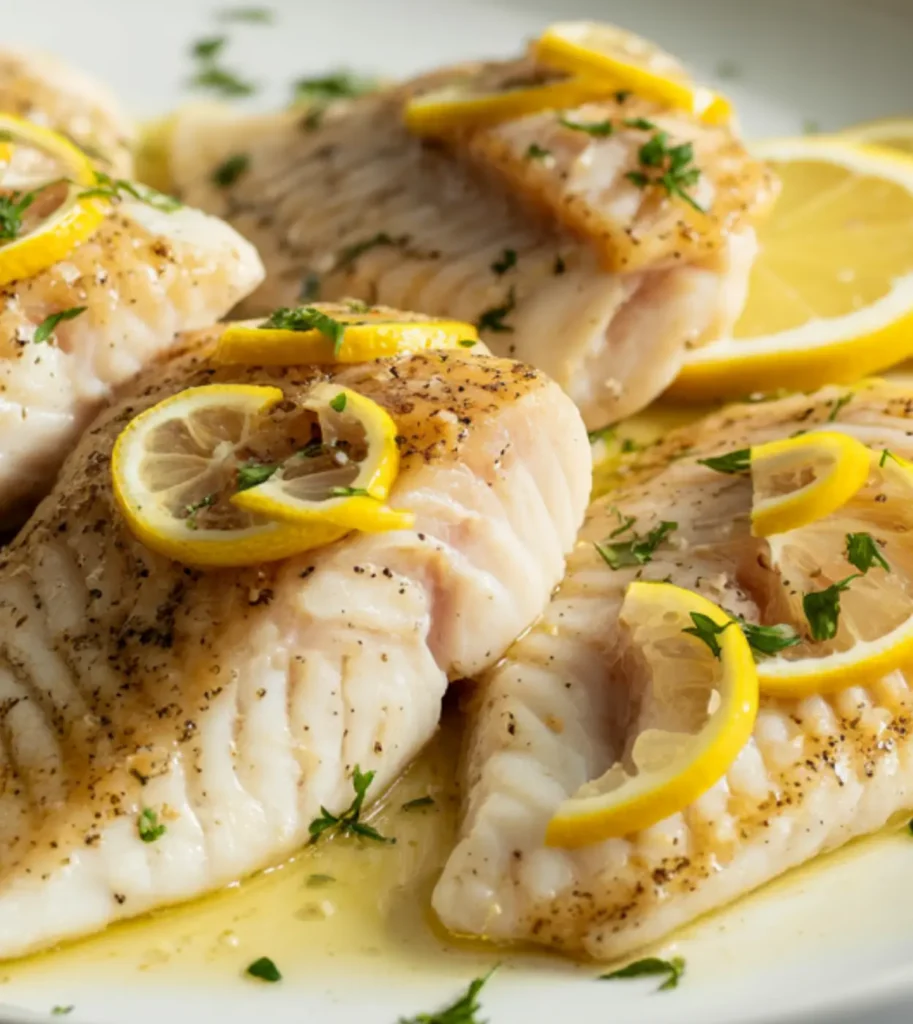
Top Tips for Perfecting Lemon Pepper Tilapia
- Select the right tilapia: Not all tilapia is created equal. Look for fillets that have a clean, mild smell with firm, translucent flesh – avoid any that appear dull or have strong fishy odors. While fresh is wonderful if you have access to it, flash-frozen tilapia is often actually fresher than “fresh” fish that’s been sitting in a case. The fillets should be of even thickness throughout (or you can adjust thicker parts by making shallow diagonal slits to help them cook evenly).
- Temperature management is crucial: Beyond patting the fish dry, two temperature factors dramatically affect juiciness. First, always let the fish come to room temperature for about 15 minutes before cooking. Second, use a heavy pan that distributes heat evenly – cast iron is excellent for this. Proper preheating prevents the fish from sticking while allowing for a good sear without overcooking.
- The power of proper seasoning timing: Apply salt to the fish 5-10 minutes before cooking, but not longer. This creates a salting effect similar to a quick dry brine that helps the fish retain moisture during cooking. However, salting too far in advance can draw out too much moisture and actually make the fish drier.
- Fresh ingredients make a difference: Pre-packaged lemon pepper seasoning simply can’t compare to the vibrant flavor of freshly zested lemon combined with freshly ground black pepper. If you must use pre-made lemon pepper, look for varieties without additives or anti-caking agents, and enhance it with additional fresh lemon zest.
- Avoid these common mistakes:
- Overcooking: Tilapia cooks very quickly – when it flakes easily and is just opaque in the center, it’s done
- Turning the fish too early: Wait until it releases naturally from the pan
- Using too high heat: Medium heat is ideal to prevent burning the delicate seasonings
- Cooking cold fish: Always let it come to room temperature first
- Overcrowding the pan: Cook in batches if necessary to maintain proper heat distribution
- Adaptations for different diets:
- Dairy-free: Use olive oil only or substitute coconut oil for the butter
- Low-carb/Keto: This recipe is already suitable, but pair it with low-carb vegetable sides
- Gluten-free: The recipe is naturally gluten-free as written
- Paleo: Use ghee instead of butter
- Troubleshooting guide:
- Fish sticking to the pan: This may be because the pan wasn’t hot enough when you added the fish, or it isn’t properly seasoned.
- Seasonings burning: Heat is too high; lower immediately and consider wiping the pan clean before continuing
- Fish too dry: Likely overcooked; next time, remove from heat when it’s just barely opaque in the center
- Not enough lemon flavor: Add more fresh lemon juice at the table, or try adding thin lemon slices during the last minute of cooking
Storing and Reheating Tips
While lemon pepper tilapia is best enjoyed immediately after cooking, here’s how to handle leftovers properly:
Short-term storage:
- Allow any leftover fish to cool completely before refrigerating
- Store in an airtight container
- Place a paper towel under the fish to absorb excess moisture
- Keep refrigerated for up to 2 days
- Note that the texture will change somewhat during storage
Freezing considerations:
- Cooked tilapia can be frozen, though the texture will be affected
- Tightly wrap each portion in plastic wrap, followed by aluminum foil.
- Put the wrapped portions in a freezer bag, making sure to squeeze out any excess air.
- Label the package with the date and use it within one month.
- For optimal results, thaw in the refrigerator overnight before reheating.
Reheating methods:
For best texture preservation:
- Gentle oven method: Preheat oven to 275°F. Place fish on a foil-lined baking sheet and add a few drops of water or lemon juice. Cover with another piece of foil and heat for 10-15 minutes until just warmed through.
Alternative approaches:
- Stovetop reheating: Place fish in a non-stick skillet with a tablespoon of water or broth. Cover and heat on low until just warmed through, about 2-3 minutes.
- Microwave (least preferred but quickest): Place fish on a microwave-safe plate, cover with a damp paper towel, and heat at 50% power in 20-second intervals until just warmed through.
Creative uses for leftovers:
- Cold tilapia can be flaked and added to salads
- Create fish tacos with slaw, avocado, and a squeeze of fresh lime
- Make a quick fish sandwich with lettuce, tomato, and tartar sauce
- Add to pasta with olive oil, cherry tomatoes, and fresh herbs
Quality check:
- Before reheating, check that the fish still has a fresh smell with no unpleasant odors
- The flesh should still be firm, not mushy
- If the fish has an ammonia-like smell or slimy texture, discard it immediately
Preventing food waste:
- Try to cook only what will be eaten fresh when possible
- If you know you’ll have leftovers, slightly undercook the portions you plan to store
- Consider preparing the seasoning in a larger batch to have on hand for quick future meals
Lemon pepper tilapia represents that perfect intersection of health, flavor, and convenience that makes it a standout weeknight dinner option. The bright, zesty profile creates a dish that feels light yet satisfying, and the simple cooking method ensures that even those new to cooking fish can achieve perfect results every time.
What makes this approach special is the focus on maintaining moisture, the key challenge when cooking any white fish. By understanding a few fundamental principles, like proper temperature management and cooking timing, you transform an ordinary fillet into something truly crave-worthy. The combination of freshly grated lemon zest and cracked black pepper creates a seasoning that’s infinitely superior to pre-packaged versions, while the two-phase cooking method ensures each fillet develops both flavor and ideal texture.
Whether you’re trying to incorporate more seafood into your diet, looking for quick yet impressive dinner options, or simply want to master the art of perfectly cooked fish, this lemon pepper tilapia recipe is your ticket to consistent, delicious results. With just a handful of ingredients and about 25 minutes from start to finish, you’ll have a restaurant-worthy meal that’s as nutritious as it is flavorful.
click here to follow me on pinterest
Lemon Pepper Tilapia Recipe: Best Way to Keep It Juicy
Cuisine: AmericanDifficulty: Easy4
servings10
minutes10
minutes250-300
kcalLemon Pepper Tilapia is a fresh, light, and flavorful dish featuring delicate tilapia fillets, seasoned with a zesty lemon-pepper blend and cooked to perfection in a combination of olive oil and butter. The fresh lemon zest and juice enhance the dish with a bright citrus note, while a sprinkle of parsley and lemon slices add freshness and color. This simple yet delicious dish can be enjoyed with a variety of sides for a healthy meal.
Ingredients
4 tilapia fillets (about 6 ounces each), patted dry
2 tablespoons olive oil, divided
1 tablespoon unsalted butter
½ teaspoon kosher salt
2 tablespoons fresh lemon zest (from about 2 large lemons)
2 teaspoons freshly ground black pepper
1 teaspoon garlic powder
½ teaspoon onion powder
½ teaspoon dried thyme
¼ teaspoon dried oregano
¼ teaspoon paprika
3 tablespoons fresh lemon juice (from the same lemons used for zest)
2 tablespoons fresh parsley, finely chopped
Lemon slices for garnish
An additional 1 tablespoon butter (optional, for extra richness
Instructions
- Prepare the Lemon Pepper Seasoning
In a small bowl, mix together fresh lemon zest, black pepper, garlic powder, onion powder, dried thyme, dried oregano, and paprika. Massage the lemon zest into the spices to release the oils and blend them into a smooth mixture. Set aside. - Prepare the Tilapia Fillets
Take the tilapia fillets out of the refrigerator 15 minutes before cooking. Pat them dry with paper towels. Season both sides with kosher salt, then coat them with the lemon pepper seasoning mixture, pressing it gently into the fillets. Reserve about 1 teaspoon of the mixture for later. - Cook the First Side
Heat 1 tablespoon of olive oil in a large non-stick or cast-iron skillet over medium heat. Add 1 tablespoon of butter and swirl to combine. Place the fillets in the pan, presentation side down, and cook undisturbed for 3-4 minutes until golden. Flip the fillets when the edges turn opaque and the bottom is lightly golden. - Cook the Second Side and Finish
Flip the fillets and cook for 2-3 minutes until just cooked through. Check for doneness by gently testing the center with a knife. Add fresh lemon juice and optional butter for extra richness, swirling the pan. Sprinkle the reserved lemon pepper seasoning and parsley over the fillets and spoon the sauce over them. - Serve
Transfer the fillets to plates, spooning any remaining sauce over them. Garnish with lemon slices and extra parsley, then serve immediately.
Notes
- Tilapia is a versatile and mild fish, which makes it perfect for recipes like this where bright, citrusy flavors shine. The combination of fresh lemon and herbs elevates the dish, making it perfect for a quick, weeknight dinner or a light meal. For extra richness, you can add a tablespoon of butter towards the end of cooking, ensuring a more indulgent experience. This dish pairs wonderfully with steamed vegetables or a side of rice.

